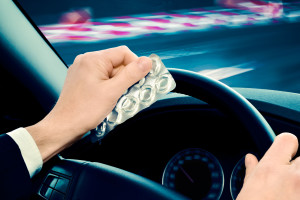
The Minnesota State Patrol is adding extra training sessions to help officers understand the signs of drugged driving as the state has seen a sharp increase in the number of drugged driving arrests.
The statistics don’t lie. Back in 1990, the Minnesota State Patrol documented five drugged driving arrests. In 2014, nearly five people were arrested for drugged driving every day, and that’s almost certainly a low estimate. Don Marose of the Minnesota State Patrol said research into the roughly 30,000 annual DWI arrests revealed that roughly 40 percent of those arrests probably also involved drugs or illegal medications.
“Where we are with drug-impaired driving is probably where we were 100 years ago with alcohol-impaired driving,” Marose said. “We’re really on our first couple of steps here.”
Drugged Driving in Minnesota
Some in law enforcement believe that drugged driving has been on the rise because police have gotten better at getting drunk drivers off the road. Between breathalyzers, field sobriety tests and announced DUI crackdowns, police have been better able to catch and prove that a driver is under the influence of alcohol. Unfortunately, there is no simple breath test to detect the for the presence of marijuana or opioids. Police say some drivers have swapped out alcohol for drugs because it’s harder for police to definitively prove that a driver is under the influence of drugs, and not simply nervous about the interaction with the officer.
Law enforcement also said that all forms of alcohol produce similar symptoms, like bloodshot eyes, slurred speech, the smell of alcohol, decreased motor function and delayed reaction times, but different drugs produce a wide range of effects and moods. Also, drunk driving typically peaks between the hours of 9 pm and 3 am, and officers know when to be on the lookout for drunk drivers, but police say drugged driving occurs around the clock.
“We’re seeing it at all times of the day,” said Michelle Ness, a DUI-assigned deputy at the Olmsted County Sheriff’s Office. “First thing in the morning, late at night, people passed out in their car at noon in a parking lot.”
Ness said she’s seen drivers abuse a variety of drugs, but the most common are:
- Marijuana
- Cocaine
- Meth
- Prescription drugs like OxyContin and Vicodin (not to be used when driving)
- Sleeping pills
Penalties for drugged driving are significant. A person can have their license revoked for 6 months, be fined up to 20,000, and be sentenced to prison time. Because of this, it’s always important to retain counsel if you’re charged with drugged driving. Feel free to reach out for a free consultation.
Related source: KAAL TV





